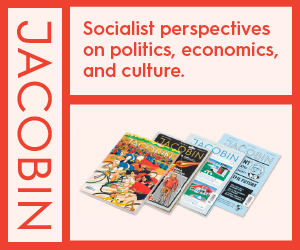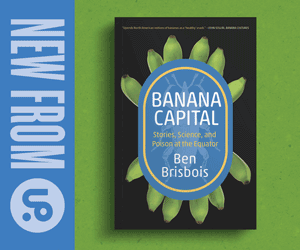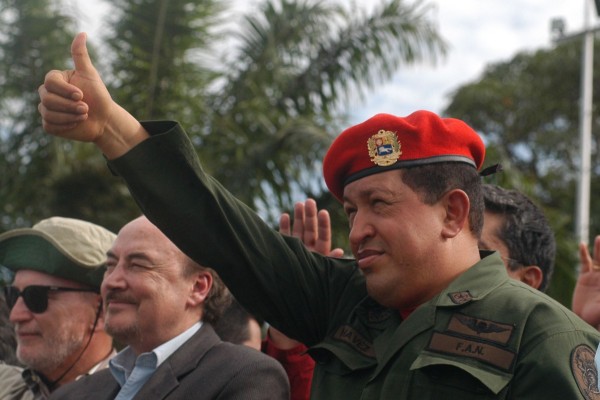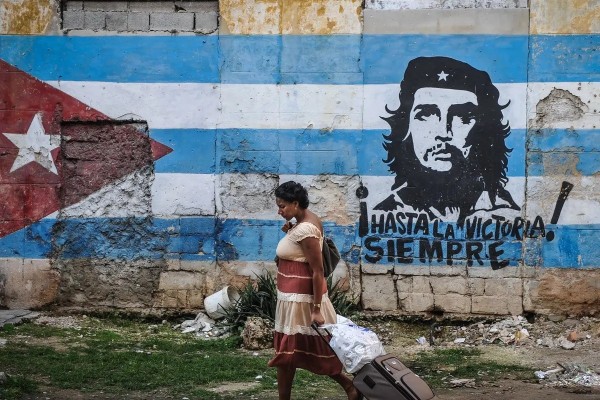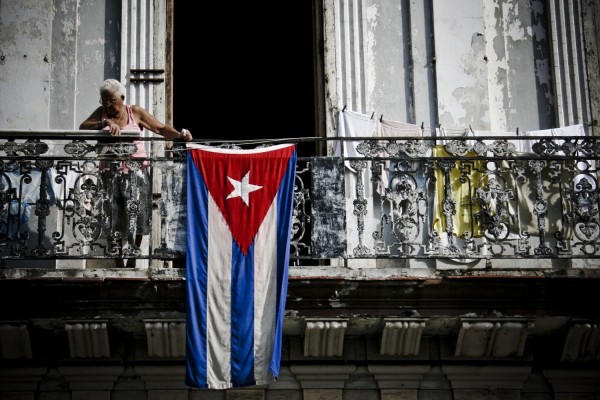When Queen Elizabeth helped overthrow Australia’s left-wing government
Any chance that Australia had of becoming a sovereign state ended in 1975 with the intervention of the CIA and Queen Elizabeth

Queen Elizabeth II departing Australia in 1973, farewelled by then Prime Minister Gough Whitlam. Photo courtesy the National Archives of Australia.
In Canada and throughout the Western world, the fêting of the late Queen Elizabeth II is inescapable. Meanwhile, racialized people throughout the Americas and Britain’s former colonies are condemning what Priyamvada Gopal calls a “mandated devotional unanimity” regarding the queen’s legacy, a performative theatre of collective grief that completely suppresses the fact that the British Empire which Elizabeth headed for 70 years operated regimes of “systematized violence [and] legalized lawlessness” throughout Africa, Asia, and the Caribbean.
In countries colonized by the British, the overlords of what Queen Elizabeth II lauded as “our great imperial family” interred millions of colonized people in concentration camps and torture facilities, organized paramilitary police forces to surveil and assassinate anti-colonial leaders, and imposed some of the most horrific abuses imaginable on entire populations simply because of their race, ethnicity, or perceived political affiliations. The queen’s image was used to justify these crimes against humanity. For instance, survivors of the concentration camps in Kenya (in which 1.5 million Kikuyu people, almost the entire population, were imprisoned during Elizabeth II’s reign) reported that the queen’s image hung in the camps, and the British officials who tortured them urged them to recognize Elizabeth and the monarchy she represented as their benevolent ruler.
In the context of Britain’s colonial administrations of terror, the 1975 constitutional coup in Australia may hardly seem worth remembering. However, as we tally the queen’s long legacy of anti-democratic acts, the removal of Australian Prime Minister Gough Whitlam’s reformist Labor government must be included, even though if pales in comparison to British atrocities in Africa, Asia, and the Caribbean that occurred under her reign.
Unlike some of the other abuses, which Elizabeth II either ignored or praised from afar, she was directly involved in the removal of Australia’s elected prime minister in 1975. Letters between her office and then Governor-General John Kerr show that her representatives encouraged Kerr to dissolve Whitlam’s government, a power never before used by a governor-general, as Whitlam gradually moved Australia toward Cold War non-alignment.
Australian journalist John Pilger describes Whitlam, who was elected in 1972 with 53 percent of the vote, as “a maverick social democrat of principle, pride and propriety.” Today, one might find more similarities between him and center-left Mexican President Andrés Manuel López Obrador than somebody like Fidel Castro or Hugo Chávez. While not embracing the leftist flank of the Labor Party, Whitlam nevertheless built an admirably anti-imperialist foreign policy and achieved some progressive gains at home. As Pilger explains:
Whitlam moved Australia towards the Non-Aligned Movement and called for a Zone of Peace in the Indian ocean, which the U.S. and Britain opposed. He demanded France cease its nuclear testing in the Pacific. In the U.N., Australia spoke up for the Palestinians. Refugees fleeing the CIA-engineered coup in Chile were welcomed into Australia… At home, equal pay for women, free universal higher education and support for the arts became law.
A US commentator wrote of Whitlam’s government that “[no country had] reversed its posture in international affairs so totally without going through a domestic revolution.”
In 1972, Whitlam withdrew Australia’s last troops from Vietnam and threw the Nixon administration into a rage by protesting US bombings of civilian areas in the country. Clyde Cameron, Whitlam’s labour and immigration minister, further angered Nixon when he said the White House was “full of maniacs.” Another of Whitlam’s ministers denounced US killings of Vietnamese civilians as “mass murder.”
In Washington, Nixon fumed. He said that such statements by Whitlam and his ministers would “imperil his country’s relations with the United States.” He described the Australian government’s criticism of US conduct in Southeast Asia as “an absolute outrage,” and he and Secretary of State Henry Kissinger agreed to “freeze” Whitlam for several months. That way, they claimed, he would “get the message.”
Professor James Curran described the White House’s attitude toward Whitlam thusly: “They couldn’t stand Australia being more independent… It was a period characterised by alarm and hysteria.”
Relations continued to sour as Whitlam sought to restructure the Australian Security Intelligence Organisation (ASIO), which was thoroughly incorporated into the global US-British intelligence apparatus under the UKUSA intelligence-sharing agreement, also known as Five Eyes. When he ordered that his staff should no longer be “vetted or harassed” by the Australian intelligence service, a CIA station officer in Saigon accused the Australian government of being “North Vietnamese collaborators.”
In 1973, the Yugoslav prime minister was planning a state visit to Australia, inciting fears in the Whitlam government that fascist diaspora groups in Australia, including the Croatian Ustaše, might try to assassinate him. Throughout the 1960s, the ASIO collaborated with Yugoslav separatist groups like the Ustaše because they considered them “good anti-communists.” Kristy Campion writes that “there was considerable political sympathy for the Ustaša in Australian circles… Tolerance predominantly came from the right wing of Australian politics, spurred by ideological alignment.”
The Australian establishment’s ideological alignment with the Ustaše was a cause of concern for the Whitlam government in the runup to the Yugoslav PM’s visit. Fearing that the ASIO was withholding information about Croatian separatist activities from the new progressive government—information that may have indicated assassination plots—Whitlam’s attorney general Lionel Murphy led a federal police raid on the intelligence agency’s Melbourne offices. In return, the ASIO accused Murphy of being a Soviet spy.
The US relied on Australia as an outpost of intelligence gathering in the Pacific, not only through the ASIO but also the Pine Gap spy base in Alice Springs, which was run by the CIA. When Whitlam threatened to reclaim Pine Gap if the US intervened with his government, the Nixon administration lost its patience.
Victor Marchetti, a CIA officer at Pine Gap, informed John Pilger that “[the] threat to close Pine Gap caused apoplexy in the White House… a kind of Chile [coup] was set in motion.” After Whitlam was re-elected in 1974, Washington replaced its ambassador in Canberra with “coup-master” Marshall Green, who had been the ambassador to Indonesia in 1965 when the CIA helped General Suharto seize power and establish his genocidal military dictatorship. After Suharto’s coup, Green praised the mass executions of suspected leftists that resulted in the murder of over one million people, stating that the Indonesian military was “working hard at destroying PKI [Communist Party of Indonesia].” His appointment as the new US ambassador to Australia foreshadowed events to come.
The 1975 “dismissal” of Gough Whitlam by the Queen’s representative, Sir John Kerr, is one of the defining moments in Australia’s modern history. It was a soft coup that destroyed a social-democratic government and its reform program. https://t.co/i9d9r3GX7R
— Jacobin (@jacobin) September 8, 2022
The 1975 coup against Whitlam was not only supported by the CIA. Queen Elizabeth II played a central role in the coup through her influence over Australia’s conservative pro-monarchist Governor-General, John Kerr. Kerr was “the Queen’s man,” in Pilger’s words, and someone with “long-standing ties to Anglo-American intelligence” whose travel expenses were paid by the CIA through the agency’s Asia Foundation.
When it came to contentious governmental matters, Kerr always turned to the queen’s office for counsel rather than the Australian prime minister. Unlike other governors-general, Kerr regularly sought advice from the monarchy before acting, rather than simply reporting back on events after they had occurred.
On numerous occasions, Kerr discussed the possibilities of dismissing Whitlam’s government with the Queen, her secretary Martin Charteris, and Prince (now King) Charles. Jenny Hocking reports that “There is no parallel in the correspondence of other governors-general with Kerr’s discussions with the queen, her private secretary, Sir Martin Charteris, and Prince Charles, regarding the possible dismissal of the Whitlam government and the use of the reserve powers (against ministerial advice) to do so.”
“That’s a really critical conversation to be having with the Queen at the time,” Hocking said, “and it’s one really that the governor-general ought to have been having with the prime minister.”
In one letter, the queen’s private secretary mentioned that some people believed the governor-general no longer had the ability to remove a sitting prime minister from office. “I do not believe this to be true,” the queen’s representative advised, adding that such an action “cannot possible [sic] do the Monarchy any avoidable harm.”
Chris Wallace notes that “In such correspondence, the queen’s private secretary is understood as speaking for the queen herself. As such, this could be interpreted as the monarch providing not just comfort but actual encouragement to the governor-general in his sacking of the government.”
Facing a political deadlock that obstructed the passing of new budget bills, Whitlam planned to call a “double dissolution” Senate election. When Whitlam brought Kerr a letter informing him of his plans to call new elections, Kerr responded by dismissing the Whitlam government. The center-right Liberal Party of Malcolm Fraser won the next election.
“The ‘Whitlam problem’ was solved,” writes Pilger. “Australian politics never recovered, nor the nation its true independence.”
In subsequent years, Kerr faced such public opprobrium for his dismissal of Whitlam that he began agitating for the release of his correspondence with the Queen’s office, which he believed would help him explain his actions. He planned to publish them in a book explaining his role in the constitutional coup of 1975.
According to Hocking, Kerr’s campaign to release the letters caused concern in Buckingham Palace, as did his frequent assertions that Queen Elizabeth II was supportive of “the way that I am going about things.” As the publication of Kerr’s book approached, the queen’s new secretary contacted Kerr and requested to review a draft manuscript. After reviewing the draft, the queen’s representative urged Kerr to remove any references to discussions between Kerr and Charteris about “the controversy” in 1975. When Kerr obliged, the secretary thanked him for protecting Queen Elizabeth II’s reputation:
I am grateful to you for being so scrupulous in omitting any reference to the informal exchanges which you had with Martin Charteris. I know that you have throughout been anxious to keep The Queen out of the controversy and I much appreciate the way in which you have achieved this in the book.
At present, the possibility that Australia might become a critic of Anglo-American military power and surveillance networks in the “Indo-Pacific” is laughable. Australia is essentially a vassal state of the US, a loyal member of Five Eyes and the AUKUS military alliance with the US and the UK, and a leading aggravator of tensions with China in the Asia Pacific region.
Any chance that Australia had of becoming a sovereign state ended in 1975 with the intervention of the CIA and Queen Elizabeth II in support of the coup against Gough Whitlam. If the queen’s legacy in the formerly colonized nations of Africa, Asia, and the Caribbean is one of torture and underdevelopment, then her legacy in Australia and the surrounding region is one of anti-democratic and anti-progressive meddling, an intervention that helped inaugurate today’s dangerously militarized situation in the Pacific.
Owen Schalk is a writer based in Winnipeg. He is primarily interested in applying theories of imperialism, neocolonialism, and underdevelopment to global capitalism and Canada’s role therein. Visit his website at www.owenschalk.com.


